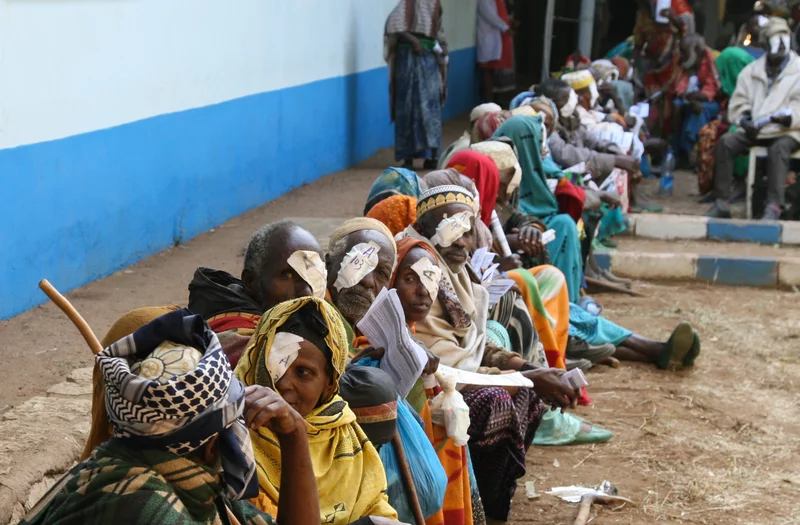News
How do you get equal health care for all? A huge new database holds clues
By: Nurith Aizenman | NPR
Posted on:
WASHINGTON (NPR) — “What gets measured gets done.” It’s an expression often cited by global health care advocates, notes World Health Organization official Erin Kenney. And she says it’s the reason she’s so encouraged by WHO’s unveiling this week of a sweeping new database highlighting health inequalities that need addressing.
Billed as the world’s most comprehensive collection of statistics on the topic, the Health Inequality Data Repository allows users to compare how people of differing incomes, ages, genders and rural-versus-urban settings compare on more than 2,000 measures of health, ranging from access to key health services to child mortality rates – and even upload and analyze their own data.
“It’s critical for us to look at various dimensions of inequality … to truly understand who’s being left behind in different contexts,” said Kenney, acting director of WHO’s Department of Gender, Diversity Equity and Human Rights.
She was speaking at a press conference to demonstrate how the new database works. Here are three takeaways from that event.

There’s a gaping need for more data on health inequality.
The new WHO database is unquestionably extensive, featuring 11 million data points pulled from 15 global statistics sources. Yet health officials at the press conference mainly stressed how much information was still missing from it.
This is partly due to gaps in the collection of health statistics more generally. “Nine out of 10 deaths in Africa are not reported,” noted Samira Asma, WHO’s assistant director general in charge of data analytics. “Imagine the huge missed opportunities to bridge inequality gaps.”
Data collectors are especially likely to miss people who belong to vulnerable groups, said Francesca Perucci, assistant director of the United Nations’ Statistical Division. “For example,” she said, “a survey of national statistical offices found that 39% could not adequately collect data on migrants, 27% had difficulties collecting data on older persons and 27% had challenges with data on persons with disabilities.”
When health statistics are available, they are often still not broken out by all the relevant sub-categories. That’s a problem because statistics that average out measures of well-being can paint a misleading picture – hiding pockets of extreme suffering.
“The importance of understanding inequities is often not prioritized enough,” said Perucci.
The result: Even within the new database, while most of the statistics are broken out by gender, only about 20% can be broken out by age or place of residence, around 15% by either education or wealth – to cite just a few examples.
“Closing inequalities is not easy,” concluded WHO’s Asma. “And we can’t do it when we don’t have good data.”
Measuring inequality is only useful if it leads to action.
Asma also warned that, as useful as the new database could prove, there’s the danger that “a data repository alone can also be a trap – a safe deposit box when data is deposited but not used.”
The point of the database, she and other officials stressed, is not merely to track the extent of health inequality across countries but to galvanize efforts to address it.
“It helps us in creating accountability on the promise to leave no one behind,” said Oscar Mujica, an adviser on health equity with the Pan American Health Organization.
Every country made that promise as part of a list of global goals adopted for the year 2030, Mujica noted. And yet, he said even though hundreds of specific statistical targets were set to ensure those broader goals were met “not a single one” actually measures progress on health inequality.
Now, “we can do that with the data that are available,” from the new database, he said. “Even with the gaps in the data, we can start creating accountability on that promise. We are running out of excuses to remain equity blind when assessing a particular population’s health situation.”
The data to date offers hope.
WHO officials noted that the database can also illustrate that progress is possible.
For instance, it indicates that over the last decade low- and middle-income countries have actually substantially reduced inequality when it comes to women, newborns and children’s access to health services. At the outset only 49% of those in the lowest income group had good health coverage compared to 68% in the highest income group – a 19 point difference. Now, that gap has been cut almost in half, with 62% of the lowest income group having health coverage compared to 73% of the wealthiest – an 11 point difference.
The data also helps make the case for prioritizing further efforts to expand access. For instance, if these same countries were to completely close the rich-poor gap when it comes to child mortality, 1.8 million children’s lives would be saved.
Taiwo Oyelade of WHO’s Africa office said he expected to get many more insights of this type from the data. “What this means for us in the African region is that we’ll be able to generate more state of inequality reports and also design more remedial interventions.”
At the press conference experts on subjects ranging from vaccinations to fighting infectious diseases echoed the sentiment.
“We know that inequalities are making our work to end these diseases less effective and less sustainable,” said Thea Willis, of The Global Fund to Fight AIDS, Tuberculosis and Malaria. “So this tool will really help us to intensify our efforts so we can end AIDS, TB and malaria faster.”
9(MDU1ODUxOTA3MDE2MDQwNjY2NjEyM2Q3ZA000))

